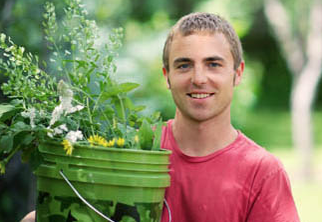
Sergei Boutenko is the author of several books on nutrition and wild edibles. When Sergei was 9 years old he was diagnosed with diabetes and told to take insulin shots for the rest of his life. Instead of taking the conventional approach, Sergei changed his diet and began a vigorous exercise regime. Within several months, Sergei had reversed his symptoms and received a clean bill of health from his doctor. Sergei holds a degree in Communication from Southern Oregon University. When he is not teaching, he spends his time filming and editing educational films related to diet and edible plants.
Steven Prussack (SP): Thank you for joining us Sergei. How are you doing?
Sergei Boutenko (SB): I am doing great, how are you doing Steve?
SP: So let’s talk about your background and how you over came illness at an early age.
SB: When I was nine years old my family began to fall apart because everyone began to get sick. My dad had hyperthyroid, my mom had arrhythmia, my sister asthma and I was the catalysis, I was diagnosed with diabetes before anyone else found out they were sick. When we turned to medicine, they told us the same thing, “Take these drugs for the rest of your life and never get better.” Can you imagine why my mom looked for an alternative? She started looking and reading other books and asking doctors about diabetes and all our symptoms and she was getting nowhere so she did something radical. She started looking at healthy people on the street and when she would see someone radiant, she would approach them and say in her deep Russian accent, as we’d just immigrated at the time and say, “Hello, my name is Victoria and my son has diabetes, do you know anything about getting rid of it naturally?”
I can’t tell you how many people she scared away before she met one lady that said she knew exactly what we needed to do and that was eat fresh organic raw food. At first it all sounded crazy but she thought there seemed to be enough truth there. So she got rid of all our cooked food and smashed our microwave and pots and pans. People ask me if she really smashed the microwave and she really did. My mom is one of those ladies that needs to do what she needs to do to stick with it. So she actually put a hammer through the microwave.
SP: Wow, I thought you meant that as a figure as speech.
SB: No, definitely she knew that if she just unplugged the microwave that we’d come home and be hungry and use it. So if she put a hammer through it then we couldn’t do that. It was all foreign to us and we were very much scared by the medical industry that if we ate fruits and vegetables that we’d die. But what we observed was the opposite. Within months my diabetic symptoms started going away, my blood sugar was normal, and every member of my family had similar benefits.
I was nine years old.
In the beginning we never planned to teach about it and we just shared our story with people that wanted to listen. The more we shared it and the more people tried it, the more we realized the benefits of eating this way. Here I am 17 years later and it has been a phenomenally amazing journey.
SP: Amazing. Yeah, you had just immigrated here but you had been exposed to the SAD (standard American diet) before transitioning like this, right?
SB: 100%. We immigrated in 1990 and we had 3.5 years of eating the SAD before our health deteriorated. Just that immigrating change, where we’d go from a Russian food store that had one type of coffee, meat, maybe cabbage, beets and vodka, to a US supermarket where there is like 200 types of coffee, 50 types of cheeses and we thought that with such abundance there is no way that the Americans could do it wrong. They’d tested everything, they were much more advanced, and they would never feed their people unhealthy food. So we just tried to eat every single thing we could.
SP: Amazing. So all these years later and on the raw food path, you’ve turned into an expert on wild edibles. Does this have to do with the long hike trips your family took? Well, you tell the story.
SB: Yes, when my family hiked from Mexico to Canada on the Pacific Crest trail was when the wild edibles’ seed was planted without me knowing it. So it’s 1998, my mother decided that eating raw wasn’t extreme enough, now we wanted to hike a trail that spans roughly 3000 miles and we want to do it all on raw food. In the beginning we actually wanted to do it bare foot but that didn’t work out. So, we had never hiked before. You can’t carry 6 months of food supply on your back so we packed food parcels and had a friend ship them along the way however we very much underestimated how much five hungry hikers could eat – my father, mother, sister, our cousin and myself. What happened is that we’d hike for four days and eat all our food that was meant to last seven days and have three days to hike with zero food. As fun as fasting is, it’s harder when you’re physically exerting yourself. So, we had a choice. We either needed to quit the trail and realize that we needed to plan better or we’d improvise. Luckily the Universe put us in touch with this man that was hiking and was a wild edible enthusiast. He said, “Are you kidding me? You guys are lacking food when there is so much here around us? And best of all, it’s free.” We started incorporating this way of eating and towards the end of the trail we were eating 70-80% off wild edibles and it was great. Our health further improved and we’ve never been the same since.
SP: Why is it important to learn about wild edibles?
SB: There are so many reasons why it is important to learn about wild edibles. The most obvious one for me currently, with the state of the economy, is cheap nutritious food that is accessible to every single person. If you go to a Whole Foods or another health food store the quality produce are very expensive. I’ve seen kale sell for $6 a bunch and maybe most families can’t afford that. When you turn to weeds and wild edibles you are getting the same quality if not better for free. Free food. Also, in the studies that I have conducted in wild edible nutrition I have realized they are much more preserved the way nature intended so humans haven’t altered them. In a timeline, 1000 years ago a dandelion was what lettuce was, there was no romaine lettuce. And over time someone decided that they were too bitter and they were tired of eating dandelion. So they would harvest that new seed and each time they harvested the new seed they would take the sweetest seed, therefore modifying the plant. 1000 years later you have this lettuce that is delicious, it was much broader leaves but unfortunately the quality of nutrient suffered immensely. So when you eat a dandelion from nature, it isn’t just a pesky weed that messes up your front lawn, it is an amazing immune system boost. It has way more chlorophyll nutrient than any kind of lettuce you can buy at the store.
SP: What are some of the other health benefits of wild edibles?
SB: The biggest health benefit is that when you begin eating wild edibles you increase the amount of food that you ingest. Side note: there is this guy, Daniel Mormon and ethno botanist devoted his life to studying what Native Americans eat. Mind you Native Americans didn’t have all the health problems we do, prior to being introduced to the way we eat. Daniel Mormon found out that Native Americans would eat 882 plants a year and use another 2000+ for medicinal purposes, as herbs, and for ceremonies, all together they incorporated over 4000 types of foods in their diet. Fast-forward to today and Michael Pollan author of Omnivores Today writes that the average human in modern day eats 30 plants per year. The amount of types of food that we consume has grossly shrunk. When you eat wild edibles you’re upping your food supply but hundreds if not thousands of different foods and increasing your chances of getting calcium, vitamin D, etc. Also, the wild edibles have longer root systems and are able to go beyond the depleted topsoil and draw out vital nutrients.
SP: Amazing, some of us don’t even think about this. We are so used to going to the farmer’s market, or Whole Foods and local organic stores and you can’t get the variety you’re talking about here. So how and where do we start learning about what we can eat and what we can’t?
SB: The learning process is a little bit difficult at first like most things are and you might doubt yourself and say that you don’t have a degree in botany. But I am here to tell you that everybody can learn about wild edibles safely. The best thing to do is to follow these three rules: Don’t eat something you don’t know what it is. You can watch my YouTube video [http://www.youtube.com/watch?v=OIaOhjIDD-8] that shows comical situations you can get in if you disregard that rule. Rule #2 is eating plants in small quantities the first time. As an example, I know that dandelions are 100% edible but I ask students of mine to try a small amount to see how their bodies take it so to make sure they don’t have adverse effects. Rule #3 is that you never mix your edibles unless you’ve had experience with them. If you go out in the woods and pick five or ten wild edibles and make a salad and if you happen to have a negative reaction you won’t know which plant you reacted to.
So those are the ground rules and with today’s access of information it’s pretty simple to start learning about wild edibles. You could pick up a good book or google most edible plants of your area and I recommend that everyone do this. For example, I live in Ashland, Oregon and I google edible plants in my area, I get a list and I print it off and it’s free and I stick it somewhere I look and everyday I learn one or two plants. While I do that I can also google ‘most poisonous plants of southern Oregon’ and there are a lot fewer poisonous ones so I start studying those as well. Slowly but surely, if you did that for 1 year you’d know 365 new plants and that’d be 365 new foods you added to your diet. For those that want even more convenience I recently released an iPhone application that puts all of my knowledge in the palm of your hand, it sells on iTunes for $2.99.
SP: Wow, $2.99 so if you go on the App Store and search ‘wild edibles’ you’ll be able to pull that up.
SB: It has photos, descriptions and recipes to identify and use the plant. Everything you’ll ever need.
SP: For those living in cities, how do you recommend we find these edibles and know if they’ve been sprayed or tainted?
SB: I am so glad you asked this question. When you live in cities you have to be more careful, it is definitely possible and there are many people that live in cities and can benefit. When you live in cities and are around human toxins and pesticides you are in more trouble than if you ate something that was just medicinal and get a stomachache from it. My best advice is that you harvest wild seeds and grow them in your garden. I found out that my wild edibles take virtually zero maintenance as opposed to my garden that I need to water, weed and cultivate. So I ordered some seeds from www.seedsofchange.com – lambsquarters, chickweed and plantain. I buried them in my garden and fast-forward a few months and I am in this wild edible forest and I go in there every morning with my blender and I chop wild edible weeds and make a delicious green smoothie. If you don’t even have garden space you do it in pots on your windowsill or on your balcony. It is accessible to everybody.
SP: What would you choose to look up on seedsforchange.com for wild edibles?
SB: I think their selection is pretty limited but they do generally have two types of purslane, they have golden purslane and lambsquarters, which is a must and chickweed. Another way is to find an organic farm near by and tell them that you’re a wild edible enthusiast and ask them if you can help them weed in exchange for the weeds. I say this because all organic farms are plagued by edible weeds. If you took any organic farm you could see that over half the food is unintentional and it is so abundant that it is a great way to utilize wild edibles.
SP: Smart, but you’d have to have a good knowledge about which weeds are edible.
SB: You would and you can talk to some of the farmers that are there. They are very knowledgeable. You could bring my App with you or come to one of my wild edibles events or find somebody local to you who eat wild edibles.
 SP: Very cool, great tips. Anything else helpful to add?
SP: Very cool, great tips. Anything else helpful to add?
SB: I’d like to say that I put out a lot of YouTube videos online on wild edibles and you can join my facebook group ‘Wild Edibles with Sergei Boutenko’ and every week there is a new video and it is a great way to learn. If you can’t come to me or I can’t go to you, we can meet on the Internet. I try very hard to film plants in a way that everybody can recognize them and talk about the identifying characteristics, so not to confuse them.
SP: Do you think the green smoothies are the best way to consume these?
SB: I think green smoothies are the best way to start experimenting with wild edibles, because the edibles are so nutritious and they’re so hearty and sometimes bitter and tastes we’re not familiar with. So with blending them with fruit in a smoothie the fruit masks the strong tastes and you are still able to get the benefits. After maybe a month of this you will find that you crave bitters and you can chop dandelions in your salad and the taste won’t affect you in the same way it would’ve a month prior. I think green smoothies are the gateway into enjoying them however you like. I will also say that blending dandelions in a pesto is a great way to eat them, the fats in the pesto will neutralize the bitterness. Pine nuts, olive oil, lemon juice, basil and dandelion.
SP: Let’s talk about raw food a little bit. Some people we’ve been talking to on this program are doing 100% raw and some are doing high percentage raw. What are you doing?
SB: Well, for 14 years of my life I was 100% raw with no exception and I would freak out if I thought that the almonds might be slightly roasted. And I just got too stressed out so I knew that I wouldn’t live forever and there was no point stressing out. I’ll give you an example, I was okay with experimenting with my body and there was a time I was living only on oranges because I thought orange juice is so healthy and I thought I’d be better off for it. It actually damaged my teeth a little bit and there were times I’d only eat fruit or only eat greens and I have basically come around to the idea that it is all a balance and you have to find your specific balance. Today I would say my diet is 85-90% raw, with a lot of greens but occasionally I will eat a steamed sweet potato or vegetables or a little bit of quinoa and I find this helps me stay away from eating the tons of nuts that I would otherwise be eating and overall I feel better because of it.
SP: That’s a great point. Some people get caught up in that, especially when they’re transition to raw and making high fat gourmet meals that combine so many kinds of fats and they find they’re lethargic and their digestion slows down and I think what you’re saying is a great way to look at it.
SB: Yeah, that is the only way I think to look at it. I feel that my family started the whole 100% raw to some extent and we’ve kind of backed off of it and that is just the learning process. You do something and find there is a better way and hopefully change.
SP: Yeah, but there is no denying that 100% raw reversed your health problems.
SB: Absolutely not. The way I look at it now is that if you have health problems right now then 100% raw is the way to go and it is more like a cleanse. You juice and drink smoothies and eat a super clean diet. Then for the long run, I incorporate some steamed things because I find that I don’t gorge when I do that and I don’t eat as many nuts, as I said earlier.
SP: Here we are in 2012, what are your plans for the future?
SB: My plan is to continue what I am doing. I am going to write a book on wild edibles, because in my book Fresh there is just a chapter or two dedicated to it. One of my most profound thoughts right now is that when you walk into a grocery store, a health food one or conventional store, it is amazing to me that 80-90 % of the food is not meant to be consumed. When things have been processed and chemicals added to it, I am shocked that we consume it and it is so unhealthy for us and I want to put that down on paper. How opposite that is from nature, when you walk into a forest and see all the wild edibles growing, you put them into your mouth and they’re 100% good for you and they are meant to be consumed. For example, I was watching the show How it’s made episode on aluminum foil and we use aluminum foil on food, after we bake, and at every step of this aluminum foil process they were dumping heavy grade commercial chemicals and solvents into it and every single step involved toxins and at no point did they clean it off, they just rolled it up and sold it to us. Wow, that makes me never want to use aluminum foil ever again. Yet it is USDA accepted that you put it on your food.
The best thing about eating raw food is that there is no waste and I have been thinking about that since day one. You buy the avocado, lettuce and tomato and you eat everything you want and maybe have some skins that you can litter anywhere you want because they’ll decompose, no plastic, and no resources, with the exception of watering the plant. That is so important for me. When we ate cooked food or processed foods everything was packaged and we had to take out the garbage 3 times a week and presently I make one garage bag every 2 weeks. I think that says it.
SP: Yeah, that says it all. Great message. As we wind down anything you want to share Sergei about raw food, transitioning, staying raw or how to have a balanced lifestyle because I know it’s not all about the food.
SB: I am really glad you asked that because sometimes within the raw food circles people tend to get divided, some say eat only fruit, some say don’t eat fruit and they flounder their counterparts. In today’s day and age where we have so many things dividing us, we don’t need another one. This is a journey for everybody and at the end of life we’ll know what we did right and what we could have done better. There is no way of knowing that my way is the right way so I just invite people to remember that and be a little more lenient to the people around them and realize that because we’re all different that makes life interesting. If we were all the same life wouldn’t be as fun.
I like how David Wolfe says it, “My message is like a CD, some tracks you’ll like and some you’ll have to skip” and I think that’s a great way of looking at it.
SP: Some may be revised in an updated version. That’s why we say to use your intuition and it’s about self-empowerment, don’t you think?
SB: I think so.
SP: What works for one many not work for another but there is a lot of information out there and we all have something to share. Thank you for your message and all the great work you’re doing. Sergei, it is an honor to have you and see you grow over the years and see you evolve into such a conscious being. Thank you for the inspiring work, I myself want to learn about wild edibles.
For more interviews with the leaders in raw food and conscious living, check out Rawpalooza Instant-Download Program Here.
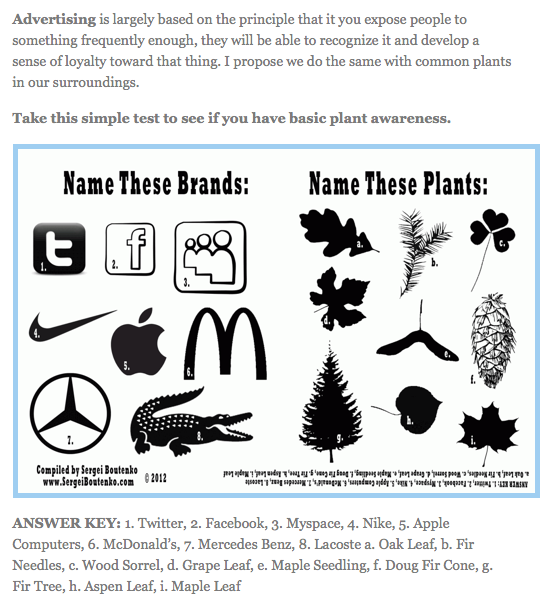
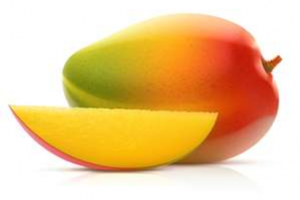

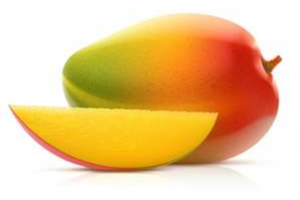


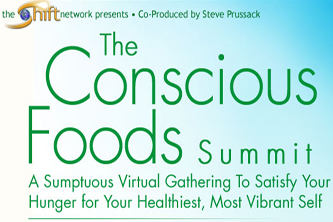



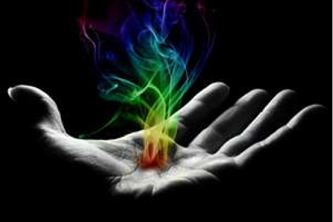



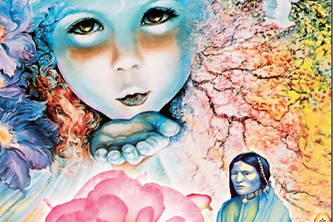
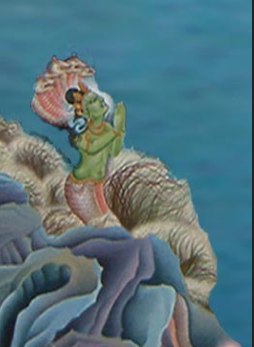


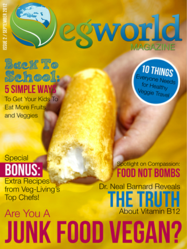
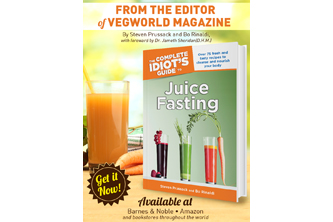




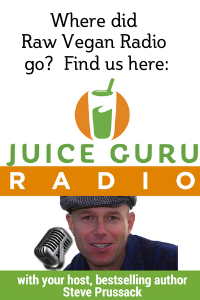
Sorry, comments for this entry are closed at this time.